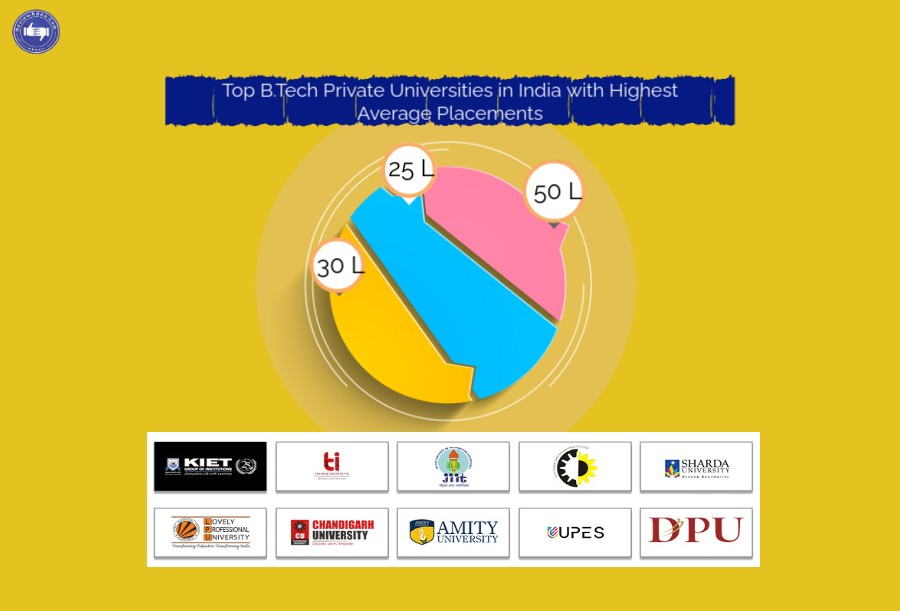JEE vs NEET vs CUET vs CLAT
Introduction:
In the competitive landscape of higher education, entrance exams play a pivotal role in shaping the academic and professional journeys of millions of students. Among the plethora of entrance exams in India, some of the most prominent ones include JEE (Joint Entrance Examination) for engineering, NEET (National Eligibility cum Entrance Test) for medical, CUET (Common University Entrance Test) for undergraduate admissions in central universities, and CLAT (Common Law Admission Test) for law.
Getting into top institutes like IITs, NITs, medical colleges and law schools in India requires cracking prestigious national level entrance exams. The four major ones are JEE, NEET, CUET and CLAT. In this blog, I will compare these exams to help students understand the key differences.
Overview of Entrance Exams
About JEE:
The test for admission to BTech, BArch, and BPlan courses at NITs, IIITs, other Centrally Funded Technical Institutions (CFTIs), and institutions/universities funded/recognized by participating State Governments is known as the Joint Entrance Examination (Main), or JEE Main for short.The JEE Main exam is given not only as a qualifying test for JEE Advanced but also for admission to IITs.
Admission to the BE/BTech course is through Paper 1, the BArch course is through Paper 2A, and the BPlan course is through Paper 2B in the JEE Main exam. The National Testing Agency (NTA) administers the computer-based JEE Main test in a number of Indian and international locations.
Applicants getting ready for JEE Mains 2024 can download the previous year's JEE Mains question paper PDF and review the test syllabus, format, and marking system here. The exam will be administered online as a computer test in accordance with the JEE Mains exam format. The previous year's JEE Main question paper will aid applicants in gauging the exam's level of difficulty. Students are also urged to familiarize themselves with the themes covered in previous years' questions by studying the chapter-wise weightage of JEE Mains 2024.
Paper 1 is for admission to the BE/BTech course, Paper 2A is for admission to the BArch course, and Paper 2B is for admission to the BPlan course in JEE Main 2024. The JEE Main test lasts for three hours, and the question paper consists of both integer value (also known as numerical value answer) and multiple choice (MCQ) questions. There will be 90 questions in JEE Main Paper 1, 82 questions in Paper 2A, and 105 questions in Paper 2B.
About NEET:
National Eligibility cum Entrance Test is the full name of the test (NEET). It is the only admission exam available in India for undergraduate programmes in medicine and paramedicine. The exam is administered once a year for three hours and twenty minutes or two hundred minutes in offline or paper-pencil-based test (PBT) format. Regarding the NEET test format, there are 200 questions spanning Physics, Chemistry, and Biology, of which 180 must be answered correctly.
The medical entrance test for admission to MBBS, BDS, BSc Nursing, BAMS, Veterinary, and other medical/paramedical degrees in India is administered by the National Testing Agency (NTA). There are 13 languages available for the test. More than 20 lakh applicants take the NEET test. The most popular medical degree is MBBS, which is followed by BDS and BSc Nursing. The quantity of NEET applicants exceeded records set in prior years last year.
Courses Under NEET
Below is a list of undergraduate NEET 2024 courses in medicine and dentistry. Following NEET 2024 qualifying, applicants may choose to be admitted to any of the following courses:
-
MBBS: Bachelor of Medicine, and Bachelor of Surgery
- BDS: Bachelor of Dental Surgery
- BAMS: Bachelor of Ayurvedic Medicine and Surgery
- BUMS: Bachelor of Unani Medicine and Surgery
- BHMS: Bachelor of Homeopathic Medicine and Surgery
- BSMS: Bachelor of Siddha Medicine and Surgery
- B.Sc Nursing: Bachelor of Science in Nursing
- BVSc & AH: Bachelor of Veterinary Science and Animal Husbandry
About CUET:
A nationwide entrance test called the Common University Entrance Test, or CUET, is required for admission to all undergraduate programmes at all central institutions. Every candidate in India has access to the same platform and chances thanks to CUET. This entrance test is administered by NTA to candidates seeking admission to undergraduate programmes in central, state, private, and deemed universities in India.In more than 300 Indian cities, CUET UG is administered in 13 different languages. The test is administered online. The subjects that a candidate selects will determine how long the CUET test lasts.
About CLAT:
The Common Law Admission Test (CLAT), a national law entrance exam, is given by the Consortium of NLUs to applicants for admission to one-year LLM (PG) and five-year integrated LLB (UG) courses. Examinations are administered to gain entry into 24 NLU undergraduate degrees and 21 NLU postgraduate programmes. Candidates must answer questions on English, Current Affairs and GK, Legal Reasoning, Logical Reasoning, and Quantitative Mathematics for UG courses, as well as Constitutional Law and other legal subjects. The exam is administered offline using pen and paper format.
Key Differences:
Eligibility Criteria
JEE Main
-
As per JEE Main 2024 eligibility criteria, applicants must have obtained at least 75% (65% for SC/ST candidates) in their respective board exams to qualify for admission to IIITs or NITs.
- For JEE Main 2024, there is no upper age limit. Nevertheless, regardless of age, only those applicants who completed their Class 12 exam in 2022, 2023, or who are applying in 2024 are eligible.
- The candidates must have passed the senior secondary (10+2) test with the top 5 grades in 5 courses, including math, physics, and chemistry.
- Applicants to B.E./B.Tech programmes must have completed their senior secondary examinations with at least five passing marks. Mathematics and Physics are required, while Biology, Chemistry, Biotechnology, and any other technical vocational course may be chosen as electives.
- Candidates for the B.Plan should have finished their 12th-level examinations with mathematics as a mandatory topic. Candidates for the B.Arch must successfully complete their senior secondary school education in physics, mathematics, and chemistry.
- Although there may be additional restrictions about the minimum grades gained, the applicants must have obtained at least the passing marks on the exam.
NEET 2024
Candidates must meet the eligibility requirements (age, qualifying score, and nationality) for NEET 2024 in order to register for the test. Before applying for NEET exam, candidates must check the detailed eligibility criteria from below:
-
Qualifying Marks in Class 12th ?Boards: Require minimum of 50% marks (40% marks for SC/ ST/ OBC) in PCB + English. Those who have taken biology in addition to PCM are eligible to apply.
- NEET attempt limit: There is no cap on how many times you may take the NEET test. You are allowed to take the NEET exam each year as long as you meet the requirements.
- The minimum age requirement for NEET 2024 is 17 before December 31, 2024. The NEET UG application process does not have an upper age limit.
- Nationality: The NEET test is open to Indian nationals, OCIs, NRIs, and international nationals. Furthermore, admission to all medical and dentistry seats in India is now possible for OCIs, NRIs, and foreign nationals.
CUET UG 2024
In order to sit for the CUET UG 2024 test, candidates must fill out the CUET application. Candidates must make sure they meet the CUET eligibility requirements before registering; else, their candidature will be revoked. According to the CUET eligibility rules, there is no maximum age for CUET UG applications. Look below to see the prerequisites for CUET eligibility:
-
Regardless of age, students who passed the class 12th or comparable test or are appearing in 2024 are eligible to take the CUET 2024 exam.
- Students must meet any age requirements set out by the university or universities they are applying to.
CLAT
In order to be eligible to take the CLAT UG test for admission to legal courses, students must fulfil the following requirements.
CLAT UG Eligibility
-
The CLAT UG exam's organising authority, the consortium of NLUs, hasn't established an age restriction.
- The minimum educational qualification for CLAT UG is securing at least 45% (General/OBC/PwD/NRI/PIO/OCI) in class 12. However, for reserved category like SC/ST, the minimum qualification required is class 12 with 40% marks from any recognized board.
- Appearing candidates are also eligible for CLAT 2024 exam. However, at the time of admission, students must present their qualifying examination certificate. If the applicant is unable to produce the passing certificate, their nomination will be terminated.
CLAT PG Eligibility
-
For CLAT PG, candidates belonging to General/OBC/PwD/NRI/PIO/OCI are required to score at least 50% in the LLB degree course. While for SC/ST candidates, a minimum of 45% is required in LLB.
- There is no maximum age requirement to take the CLAT PG test.
- Students in their final year or those who are appearing can apply for the CLAT test.
Application Form Details
JEE
In JEE Main Registration 2024, the NTA has made a new modification.
NTA has added the ability to choose a preferred registration mode to the JEE Main registration procedure. The Aadhar Enrollment Number, PAN, Passport Number, or ABC ID (Academic Bank of Credit ID) can all be used by candidates to register.
Documents Required for JEE Mains 2024 Registration
When filling out the application, candidates should have the following papers on hand.
-
Class 10 and 12 certificates
- Category certificates (if applicable)
- Details for online banking or credit/debit cards to pay for JEE Mains form costs
- scanned copy of a colour passport picture and signature
How to fill the JEE Main Application Form 2024?
Here's a methodical guide to help you sign up for JEE Main session 2, which begins today:
-
By visiting jeemain.nta.ac.in, the official JEE Main Registration NTA website, one may find the registration URL for the 2024 session.
- Click on the "New Candidate Registration" link under JEE Mains Apply Online.
- After providing the required information on the registration form, select a password. Click on "Submit" in the menu.
- Obtain your cellphone number and password on your registered email address and JEE Main registration number.
- After logging in, fill out the application form with all the required information. Scan the needed files, including the pictures, and attach them.
- Proceed to pay for your JEE Main 2024 fees via Net Banking, a credit card, a debit card, or a UPI.
- As soon as the JEE Mains 2024 registration funds are successfully collected, your application will be mailed out immediately.
- The completed form's confirmation page (PDF), which you may examine, save, and keep for further use, will be sent to your email address.
NEET
How to fill NEET Application Form 2024?
Filling out the NEET 2024 application form is done entirely online. There are three or four phases in the procedure, which are as follows:
-
Completing and creating the password for the NEET Registration 2024 form
- Accessing the NEET 2024 registration information, including the login and password
- Completing the NEET application
- Uploading Documents and Making Payments
Step 1: Registration
-
Go to neet.ntaonline.in, the official NTA NEET website, or input the URL directly at https://neet.ntaonline.in/frontend/web/registration/index.
- To get the invitation for NEET Registration 2024, click "Fill Registration Form."
- Go to 'New Registration' and peruse the guidelines.
Enter the following details on the NEET UG application form 2024:
-
Candidate’s Name
- Mother’s name
- Father’s name
- Date of birth
-
Category
-
Gender
-
Nationality
- Persons with Disability
- Identification Type
- Identification Number
- Mobile number
- Email Id
- Password
- Enter Security Pin
Step 2: Filling up NEET Application Form 2024
-
Select "Click here to log in."
-
Enter your password and application number to log in.
- Your screen will open with the NEET form 2024.
- The application will be pre-filled with information you supplied during the registration process, and it cannot be altered.
There are twelve areas on the form. Please fill in the following information:
The several NEET application form parts are included in the table below, along with the information that has to be entered in each one.
-
Verify all the information thoroughly since once the NEET 2024 application form is submitted in its final form, it cannot be amended.
- Click "Yes, please do" on the confirmation pop-up to submit the properly completed application form.
Step 3: Upload scanned images
-
Click on “Upload your recent documents”
- Select the files to be uploaded
- Click on “Next”
Step 4: Make Payment
Choose your preferred payment method (UPI, SBI, Syndicate, HDFC, ICICI, Paytm Payment Gateway using Debit/Credit Cards, Net-banking, or PayPal).
As instructed by NTA, applicants must make sure they finish the process before the NEET 2024 registration deadline. Beyond that, they may not get a second chance to fill the NEET application form 2024 .
CUET
It is projected that in February of 2024, NTA will post the CUET 2024 application form on its official website. Students must fill out the CUET 2024 application form by visiting the official website, cuet.samarth.ac.in, as soon as it becomes available. They have to fill out the necessary information to register on the portal, and then they have to submit the application fee and necessary paperwork to complete the process. As soon as the CUET 2024 registration information is available, we will update it.
CUET 2024 Application Form: List of Documents to Upload
Before completing the CUET 2024 application form, candidates must have the following documents available in the required size and format:
Steps to Fill CUET 2024 Application Form
Students can fill out the CUET 2024 application form by following the instructions provided below.
-
Launch the official cuet.samarth.ac.in website.
- Please fill out CUET registration form 2024 with your name, phone number, and address.
- The login credentials will be generated and sent using the registered email address and phone number.
- Students can complete out the CUET application form by using the login credentials that NTA has issued.
- Upload the required materials, which should include your signature in the appropriate format and a scanned copy of your ID card.
- Then pay the required online application cost.
- Print out the completed application form for your records.
CLAT
On July 1, 2023, the Consortium issued the CLAT PG Application Form 2024. It is important for candidates to be aware that the CLAT LLM 2024 application form is available on the Consortium of Nlus.ac.in, the official website of NLU. Candidates may complete the CLAT LLM 2024 Application form through November 10, 2023, according to the consortium. The correction time for the CLAT 2024 application form has now started. Until November 12, candidates may make changes to their CLAT LLM Application Form 2024.
Applicants were urged to view the processes for the CLAT 2024 application form in the video provided below:
Important Documents Required
Applicants can review the list of needed papers below in order to apply for CLAT 2024:
-
A scanned picture of a current passport-size front facing photo on a simple backdrop
- Scanned signature of the candidate BPL certificate (if applicable) or SC/ST/OBC/PwD candidates' category certificate
How to fill CLAT Application Form
Applicants can submit their CLAT 2024 application by following the easy instructions listed below:
-
Registration: To register, a candidate must provide their email address, mobile number, and name. Additionally, pick and validate a password for the just established applicant account.
- To view the application form, log in.
- Choose the study programme: The first step after checking in is to choose the one-year study programme. LLB
- Complete the form. It will ask for personal information, contact information, the status of your qualifying test, your preference for an exam centre (you can choose up to THREE centres), and a reservation. Every field must be completed. Verify which papers, according to the specified specifications, must all be uploaded (see the table below).
Document Required
Furthermore, applicants (for CLAT LLM only) must provide their LLB graduation certificates. The information from these documents must be presented by them. The original documents and certificates are only required for admission and CLAT PG counselling in 2024; without them, admission will not be approved.
5. Submit the form - After all information has been correctly entered, accept the declaration, provide your permission, and submit the form.
6. Pay the application fee - The final step involves paying the application fee online by credit or debit cards or net banking. The amount varies depending on the category. It should be noted that applicants who wish to use past years' test questions will need to pay an extra INR 500 on top of the exam price.
Application Fee 2024
JEE Main
NEET
CUET
The number of topics selected by the students and their category are used to compute the CUET costs for 2024. For the cost of the CUET application form, see the table below.
CLAT
This year's CLAT registration fees are unchanged. The registration cost for CLAT 2024 is INR 4000 for candidates in the general category and INR 3500 for candidates in the SC, ST, and BPL categories. Women, PwD, and NRI candidates are not eligible for any fee exemptions. Additionally, candidates can choose to pay an additional INR 500 for previous year's CLAT question papers when completing the CLAT application form 2024.
Conclusion:
Each exam serves a specific purpose and are suited for particular disciplines. Understanding the key differences in terms of subjects, exam patterns, difficulty levels and score usage will help students make informed choices.




.jpg)
